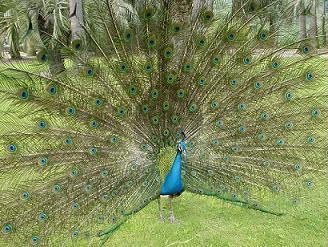Formatting Guidelines
Attach a Word file that combines the article type, title, abstract, keywords, text, references, and diagrams to the attachment. Please refer to the Formatting Guidelines for the format of the article.
Manuscript Types
The types of manuscripts in Expansions are classified as follows.
(1) Original Paper
(2) Review Paper
Manuscript Text
The text is written as follows.
(1) The form is not particularly limited, but the purpose, method, and conclusion are clarified. For example, in a text, the introduction, method, result and consideration, conclusion, and so on. In the contents of the text, redundant explanations of common-sense matters and descriptions of textbook contents are avoided.
(2) The part of chapters, clauses, and sections shall be point systems. Chapters can be subtitled. The chapter number shall be "1., 2., …", the clause number shall be "1.1., 1.2., …" and the section number shall be "1.1.1., 1.1.2., …". If a further subdivision is required, (1) ……, (2) ……, but avoid further subdivision.
(3) The beginning of a new line is separated by three characters.
(4) If footnotes are required, they shall be indicated on the right shoulder of the paragraph of the text as footnote 1), summarized at the bottom of the same page, and distinguished from the text.
(5) Each formula is numbered consecutively in parentheses as follows.
A + B = C (1)
(6) Figures and tables shall always be numbered and cited in the text. For example, Figure 1 shows "Figure 1", and Table 1 shows "Table 1".
(7) The title and description of the figure are written at the bottom of the figure. The table title should be written at the top of the table and the description at the bottom of the table.
(8) Numbers indicating quantities and ordinal numbers shall be Arabic numerals.
(9) In principle, SI units should be used for units. If non-SI units are used, indicate the conversion method.
References
As a general rule, personal communications, and unpublished materials are not permitted as "references".
(1) When citing references in the text, follow the format below.
If there is only one author (Author's last name, year of publication), if there are two authors (Last name of author A and last name of author B, year of publication), and if there are three or more authors (First author et al., year of publication).
(2) The format of the list of references should be as follows.
References are listed alphabetically by author name at the end of the text. When there are two or more articles by the same author, they are arranged in order of year of publication, and when there are two or more articles in the same year of publication, they are arranged after the year of publication with a, b, c, etc.
In principle, references should be written in English. The author's name should be the surname first, followed by the initials of the first name. For co-authors of three more persons, "et al." shall be used. In the case of a magazine, the author's name, article title, the name of the magazine, the year, the number of volumes (number), and the starting and ending pages are entered in this order. In the case of a book, the author's name, the book title, and the name of the publisher should be stated and the pages cited should be written like "3-5". In the case of electronic documents, the website authors' name, publication year, title, URL, access date, and so on. See the following examples for how to write references.
Examples:
(a)Journal Article
[1] Yanagi, M. Analysis of the path and mode of tourism resources innovation in Japan. Geographical Research Bulletin, 2022, 1, 2-13.
[2] Cao, C., Lin, M. Present situation and development trend of water drive development technology in the oil field: Take China as an example. Advances in Resources Research, 2022, 2(4), 67-76.
[3] Hou, X., Zhang, J., Li, C., et al. Analysis on geological characteristics and resources potential of the Middle-Upper Proterozoic shale oil and gas: Taking North Hebei Depression in Yanshan area as an example. Advances in Resources Research, 2022, 2(2), 41-54.
[4] Ito, H., Osawa, S. Momentum and effect of local specialty development in regional development: A case study of Samegawa village, Fukushima Prefecture. Journal of Rural Planning Association, 2009, Special_Issue, 263-268.
[5] Li, Y. Application of asynchronous injection-production water injection in Dongshengbao Buried Hill. Petroleum Geology and Engineering, 2011, 25 (Supplement), 16-17.
(b)Book
[6] Guo, X. The Development history of world offshore oil. Petroleum Industry Press, 2012, 33-35.
(c)Research Report
[7] RezaeiDoust, A., Puntervold, T., Austad, T. A discussion of the low salinity EOR potential for a North Sea sandstone field. SPE-134459-MS, 2010.
(d)Newspapers
[8] Ling, G. Climate warming leads to "winter wheat moving northward". Beijing Daily, 2014-04-16, 17.
(e)Early Publication
[9] Wang, Z., Cao, G., Bai, Y., et al. Present situation and the prospect of improving oil recovery of low permeability reservoirs in China. Special Oil & Gas Reservoirs, Early Publication, August 12, 2022.
(f)Conference Article
[10] Wang, X., Yuan, G., Han, J., et al. Effect of water injection speed on huff and puff effect of water injection. Proceedings of the Chinese Congress of Theoretical and Applied Mechanics, 628-634, Hangzhou, 2019.
(g)Dissertation Article
[11] Sun, S. Adaptability evaluation and scheme design of low salinity water flooding in Wuliwan Chang 6 reservoir. China University of Petroleum (Beijing), 2019.
(h)Preprint
[12] Liu, X. The economic evaluation of tight oil development under uncertainty: Example of development in China. JXIV, 2022-03-28. DOI: 10.51094/jxiv.7.
(i)Electronic Literature, Website
[13] Shale Gas Reporter. Range Resources sets record lateral length in Pa. http://shalegasreporter.com/news/range-resources-sets-record-lateral-length-pa/60921.html (Accessed 2020/11/16).
